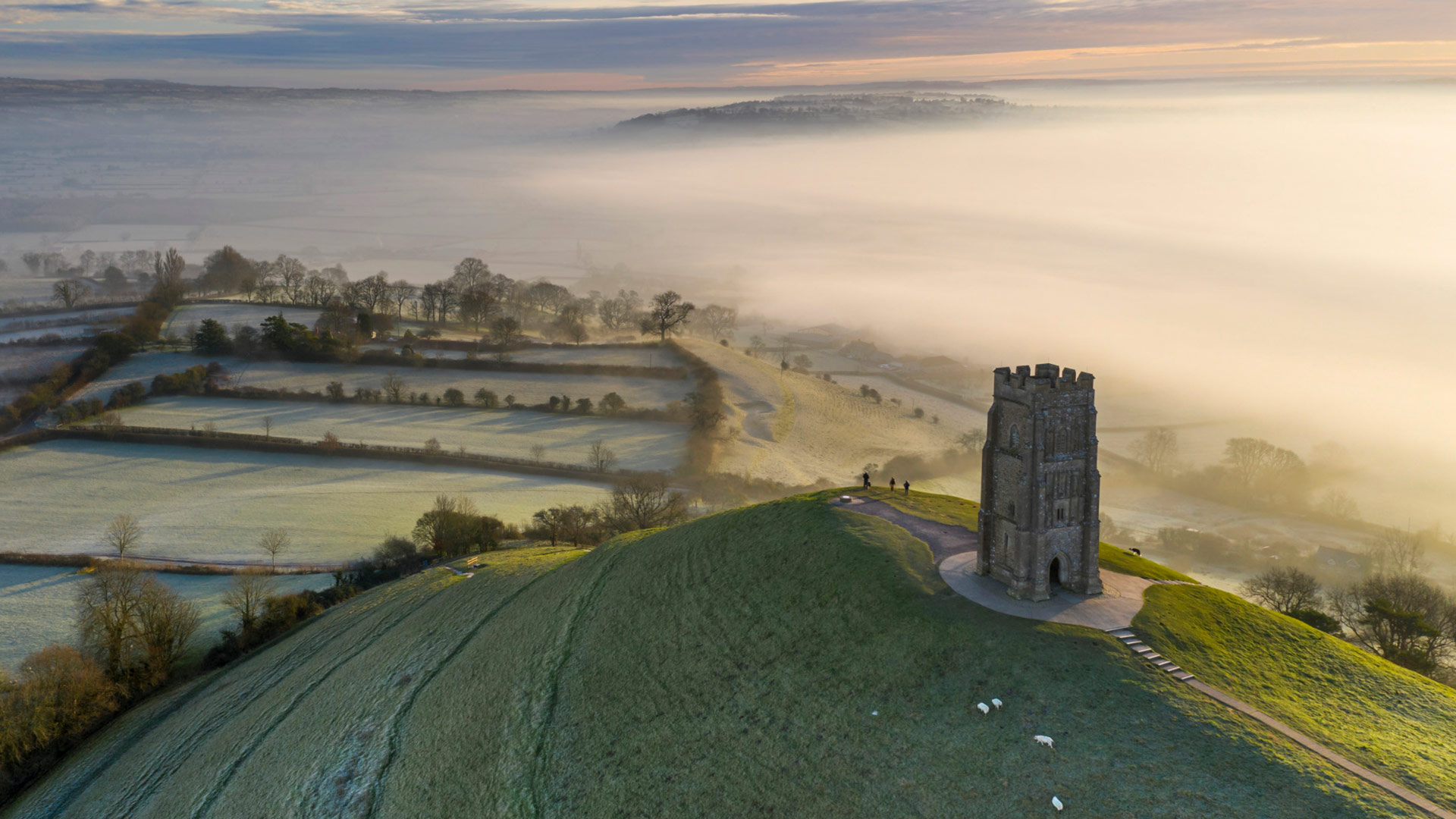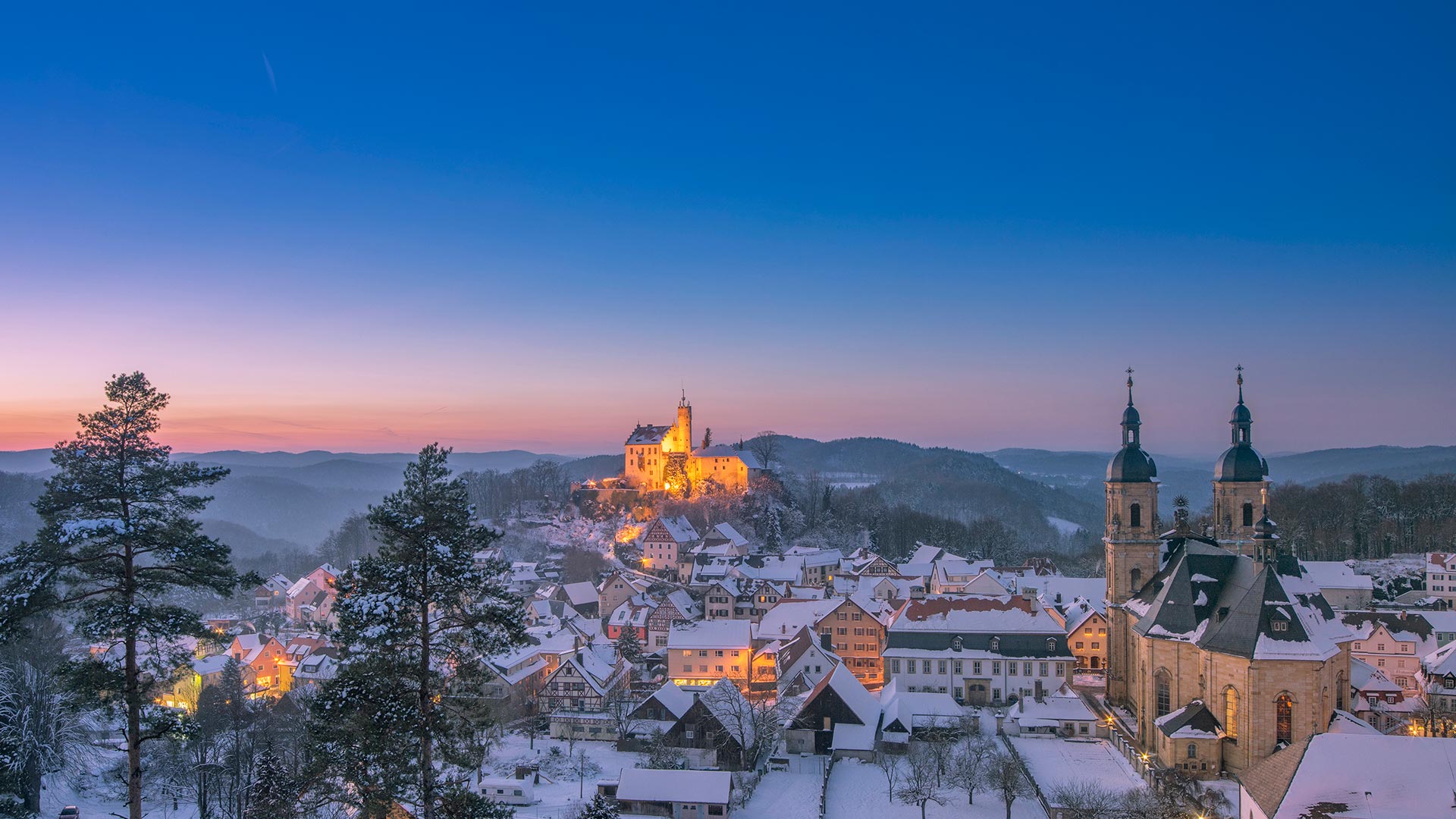标签 城堡 下的文章
孚日山脉上的国王城堡,法国阿尔萨斯 The Château du Haut-Kœnigsbourg in the Vosges mountains, Alsace, France (© Leonid Andronov/Shutterstock)
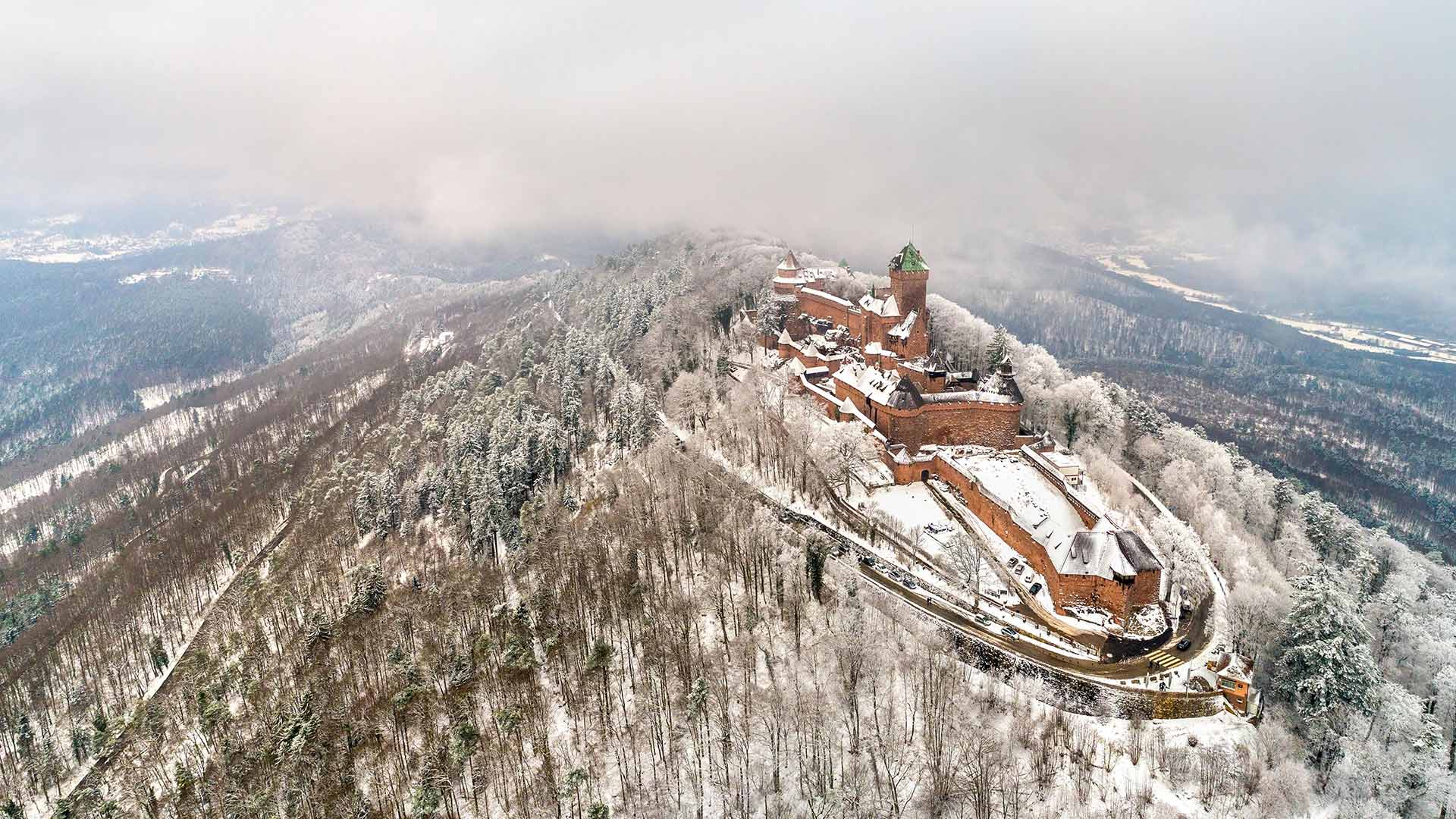
孚日山脉上的国王城堡,法国阿尔萨斯 The Château du Haut-Kœnigsbourg in the Vosges mountains, Alsace, France (© Leonid Andronov/Shutterstock)
Haut-Koenigsbourg Castle
Haut-Koenigsbourg Castle is an old medieval castle left over from the Vosges Mountains in the Alsace region of northeastern France. It has a history of 850 years, and due to its proper preservation, this allows us to see what it looked like back then. Also, you can have an overlook of the city of Alsace from the top of a hill...
The castle was built in the 12th century to monitor the trade routes of silver and wine. It was destroyed in the Thirty Years' War in the 17th century and rebuilt in the early 20th century. Today, it is a popular tourist destination, visited by 500,000 people every year, as a museum displaying medieval weapons and Renaissance frescoes.
上科尼斯堡城堡酒店
上科尼斯堡城堡是法国东北部阿尔萨斯地区沃斯山脉遗留下来的一座古老的中世纪城堡。它有850年的历史,由于它的妥善保存,这使我们能够看到它当时的样子。此外,你可以从山顶俯瞰阿尔萨斯市。。。
这座城堡建于12世纪,用于监控白银和葡萄酒的贸易路线。它在17世纪的30年战争中被摧毁,并在20世纪初重建。今天,它是一个受欢迎的旅游胜地,每年有50万人参观,是一个展示中世纪武器和文艺复兴时期壁画的博物馆。
薄雾中的格拉斯顿伯里托尔,英格兰萨默塞特郡 Glastonbury Tor, Somerset, England (© DEEPOL by plainpicture/Adam Burton)
蒙特城堡,意大利普利亚大区 Castel del Monte, Apulia, Italy (© Toni Spagone/Alamy)
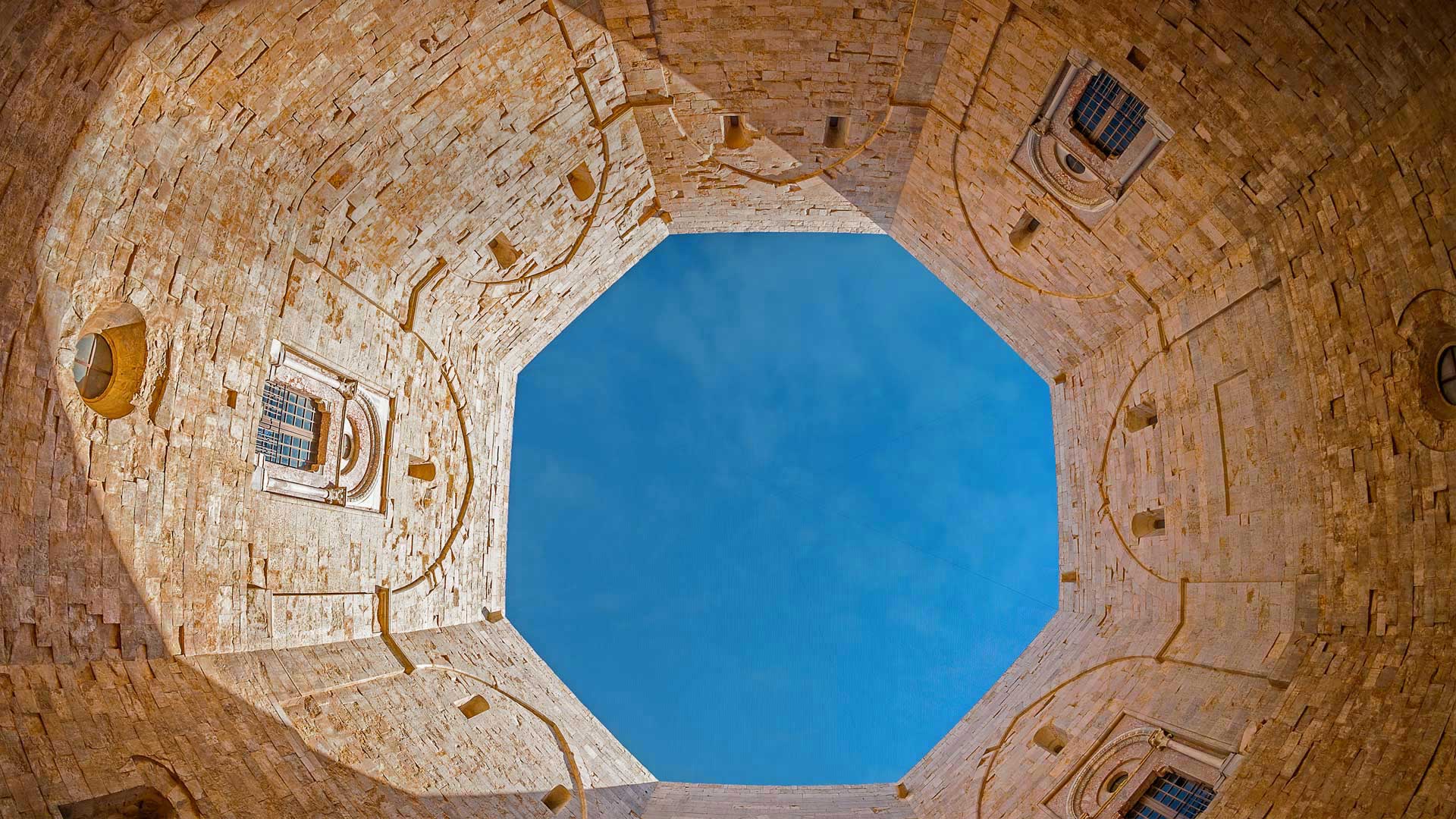
蒙特城堡,意大利普利亚大区 Castel del Monte, Apulia, Italy (© Toni Spagone/Alamy)
An octagonal architectural treasure
Built in the 1240s by the Holy Roman Emperor Frederick II in southeast Italy, Castel del Monte (Castle of the Mount) features an unusual octagonal design. Eight stone walls stretch between eight octagonal towers and enclose an octagonal courtyard. Each of the two floors also has eight trapezoidal rooms. Acclaimed and protected as a World Heritage Site in 1966, the castle symbolically reflects a harmonious integration of classical Roman, Arabic, and medieval architecture and design—and to some, its octagonal symmetry suggests a connection between heaven and earth.
Its original purpose is unclear. Without a drawbridge, moat, or curtain wall to protect it, it was clearly not a defensive fortress, and its lack of stables call into question its function as a hunting lodge. Over the centuries it has served as a prison and as a refuge from the plague. But whatever the emperor's intention, he left a captivating monument that still enchants today.
八角形建筑瑰宝
蒙特城堡(山上城堡)建于1240年代,由神圣罗马皇帝腓特烈二世在意大利东南部建造,具有不同寻常的八角形设计。八堵石墙在八座八角形塔楼之间延伸,围绕着一个八角形庭院。两层楼各有八个梯形房间。1966年,这座城堡被誉为世界遗产,并受到保护。它象征性地反映了古典罗马、阿拉伯和中世纪建筑与设计的和谐结合,对某些人来说,它的八角对称性暗示着天地之间的联系。
其最初目的尚不清楚。由于没有吊桥、护城河或幕墙的保护,它显然不是一个防御堡垒,而且它没有马厩,这使它作为狩猎小屋的功能受到质疑。几个世纪以来,它一直被用作监狱和躲避瘟疫的避难所。但不管皇帝的意图是什么,他留下了一座迷人的纪念碑,至今仍令人着迷。
埃尔福特附近的瓦克森堡城堡, 德国 Wachsenburg Castle near Erfurt, Germany (© Radius Images/Offset by Shutterstock)
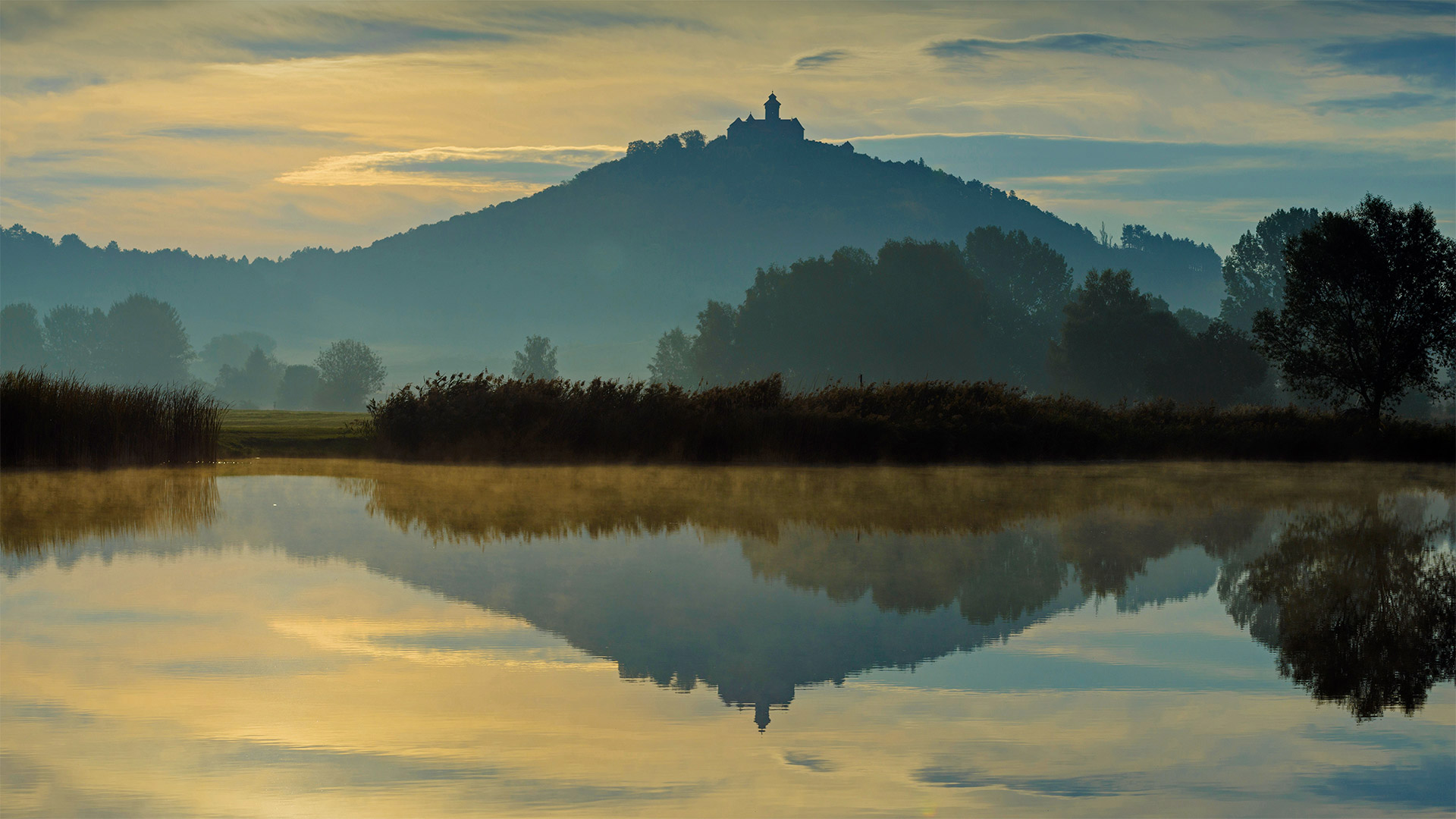
埃尔福特附近的瓦克森堡城堡, 德国 Wachsenburg Castle near Erfurt, Germany (© Radius Images/Offset by Shutterstock)
A reflection of Europe's past
Today we're in the central German state of Thuringia to visit Wachsenburg Castle. It's the most famous of a trio of medieval hilltop castles collectively referred to as 'Drei Gleichen' (Three of a Kind) because of their close resemblance. Wachsenburg was originally built by the Hersfeld Monastery sometime in the early 10th century as a fortified castle, but it underwent significant changes over the centuries.
As might be expected of a building nearly 1,100 years old, the castle has housed many different occupants in its time, some of them notorious. Through most of its history it was used as a defensive fortress, and by the 13th century the Counts of Mühlburg had added a moat to help fend off invaders from nearby Hungary. Later, in the mid-15th century, an infamous brigand and wayward knight named Apel von Vitzthum conquered Wachsenburg. He used it as a base to carry out raids against merchants in the nearby town of Erfurt before the locals finally banded together to put an end to his pillaging. The Duke of Saxony took control of the fortress in 1710, but by the late 18th century, it was being used as prison. These days, Wachsenburg plays a different role in the local community. Following a number of renovations, including a major one in the 1990s, it's now a tourist destination complete with restaurant, hotel, and museum.
欧洲历史的反映
今天我们在德国中部的图林根州参观瓦克森堡城堡。它是三座中世纪山顶城堡中最著名的一座,因为它们非常相似,所以被统称为“Drei Gleichen”(一种三座)。瓦克森堡最初是由赫斯菲尔德修道院建于10世纪初的某个时候,作为一个设防的城堡,但它经历了几个世纪的重大变化。
正如人们所料,这座有着近1100年历史的建筑,在它的时代里居住着许多不同的居住者,其中一些人臭名昭著。在其历史的大部分时间里,它被用作防御堡垒,到了13世纪,缪尔堡伯爵又加了一条护城河,以帮助抵御附近匈牙利的入侵者。后来,在15世纪中叶,一个臭名昭著的土匪和任性的骑士命名为阿佩尔冯维茨图姆征服了瓦克森堡。他以这里为基地,对附近埃尔福特镇的商人进行突袭,直到当地人最终联合起来,结束了对他的掠夺。1710年,萨克森公爵控制了这座要塞,但到了18世纪末,它被用作监狱。如今,瓦克森堡在当地社区扮演着不同的角色。经过多次翻修,包括上世纪90年代的一次大型翻修,现在它已成为一个旅游胜地,拥有餐厅、酒店和博物馆。
戈佐岛上的Cittadella城堡,马耳他 Cittadella on the island of Gozo, Malta (© Davide Seddio/Getty Images)
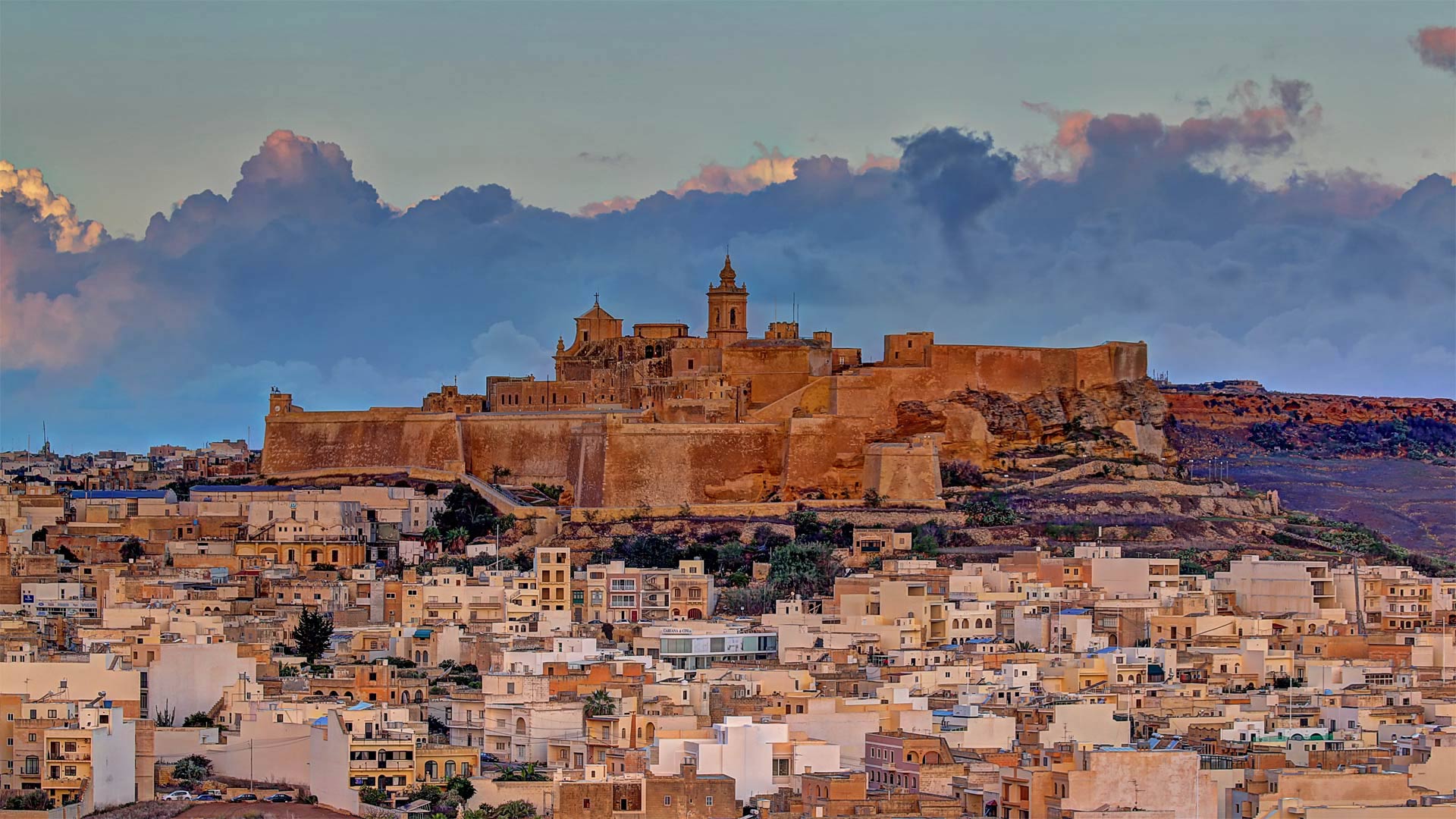
戈佐岛上的Cittadella城堡,马耳他 Cittadella on the island of Gozo, Malta (© Davide Seddio/Getty Images)
A celebration of Maltese culture
That mighty fortress at the top of the hill is called the Cittadella—it's a medieval fortified city at the geographical center of the island of Gozo. Gozo is the second-largest island in the Maltese archipelago (after the island of Malta itself), and despite all appearances it's the less densely populated of the two.
On both Gozo and Malta, today marks the start of a two-day celebration of Maltese culture called Mnarja (sometimes spelled Imnarja). The national festival dates from the 16th century and is dedicated to the feast day of Saints Peter and Paul. During Mnarja, centuries-old Maltese customs and traditions are on full display. The streets come alive with traditional folk songs called ghana, as well as dancing, and horse and donkey races, some of which feature jockeys riding behind in chariots. Malta's national dish, a rabbit stew called fenkata, is served at nearly all Mnarja events. During the festival's medieval origins this was the only time of year when ordinary Maltese people were allowed to eat rabbit, which was usually reserved for the knights that then ruled the islands. To wash down the rabbit stew? Maltese wine, of course. Saħħa! ('Cheers!')
马耳他文化庆典
山顶上那座雄伟的堡垒被称为Cittadella,它是一座中世纪的防御城市,位于戈佐岛的地理中心。戈佐岛是马耳他群岛中的第二大岛(仅次于马耳他岛本身),尽管从表面上看,它是两个岛屿中人口密度较小的一个。
在戈佐和马耳他,今天标志着为期两天的马耳他文化庆祝活动的开始,这一活动被称为Mnarja(有时拼写为Imnarja)。这个国家节日可以追溯到16世纪,是为了纪念圣徒彼得和保罗的节日。在姆纳贾期间,几个世纪以来的马耳他习俗和传统得到充分展示。街道上充满了被称为加纳的传统民歌,还有舞蹈、赛马和驴子赛跑,其中一些是骑师坐在战车后面。马耳他的国菜,一种名为芬卡塔的炖兔肉,几乎在所有的姆纳贾活动中都有供应。在节日起源于中世纪的时候,这是一年中唯一允许普通马耳他人吃兔子的时候,兔子通常是留给当时统治群岛的骑士的。把炖兔肉洗干净?当然是马耳他葡萄酒。萨尼亚!干杯
埃尔瓦什附近的格拉萨圣母堡,葡萄牙 Nossa Senhora da Graça Fort near Elvas, Portugal (© Luis Pina Photography/Shutterstock)
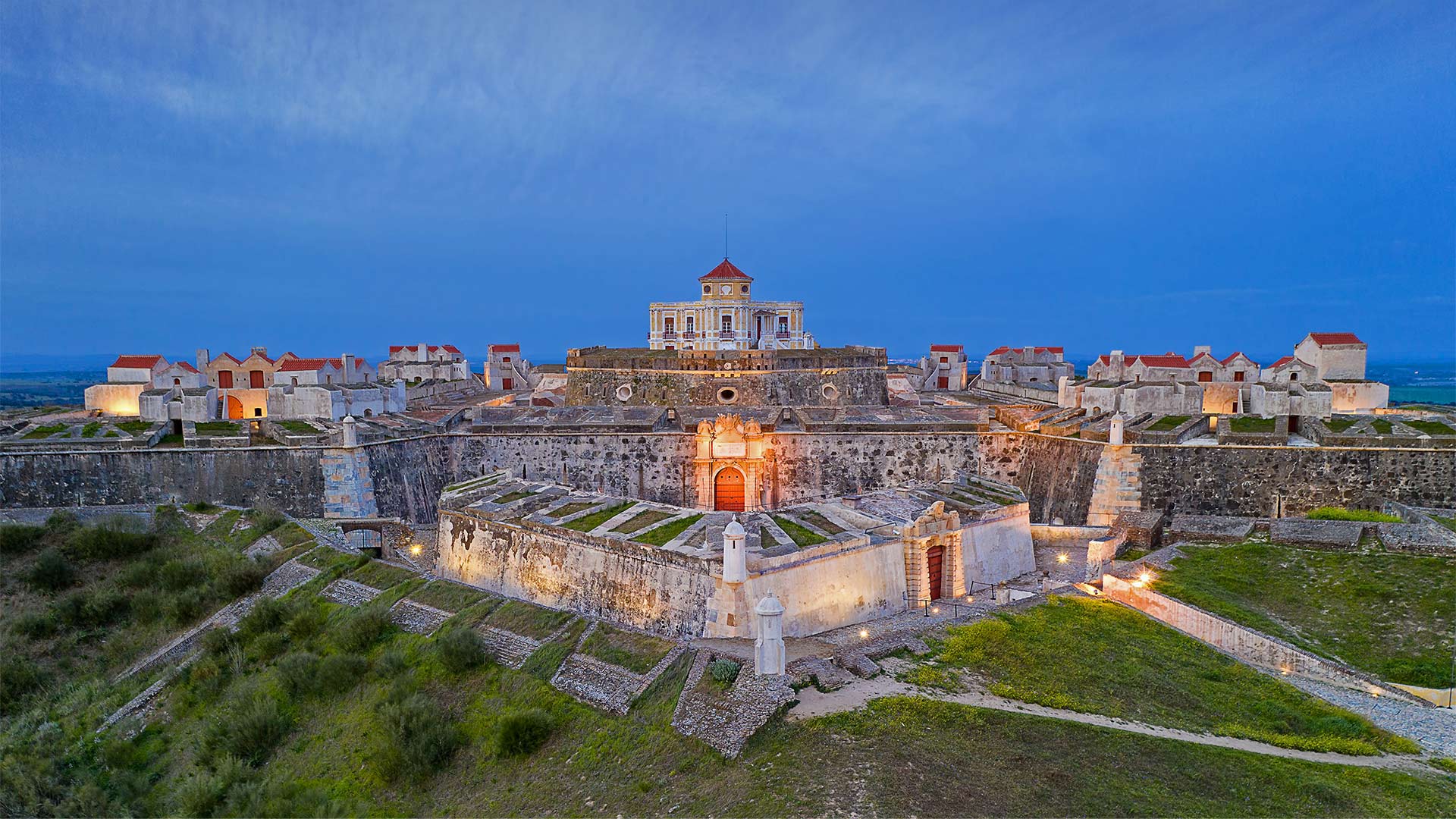
埃尔瓦什附近的格拉萨圣母堡,葡萄牙 Nossa Senhora da Graça Fort near Elvas, Portugal (© Luis Pina Photography/Shutterstock)
A Portuguese fort takes a star turn
Perched on a strategic hillside, high above the hot, dry plains of eastern Portugal, the Nossa Senhora da Graça Fort has been called a masterpiece of 18th-century military architecture. The thick wall that surrounds the fortress are shaped in a star pattern, with pentagonal bastions jutting out from the curtain wall at the corners. We're looking at one of those bastions in the center of our image.
A stone's throw from the Spanish border, the Nossa Senhora da Graça Fort was built to defend the garrison border town of Elvas. It's a region shaped by war. The Spanish laid siege to the area during the Portuguese Restoration War (1640-1668), but after the Nossa Senhora da Graça Fort was built a century later, the town was never defeated. With its 144 cannons, the fort resisted an attack by another wave of Spanish forces during the 1801 War of the Oranges and 10 years later drove back an invading French army during the Peninsular War.
Eventually the fort became a political prison, which it remained until 1974, when it was abandoned and fell into ruin. But it was restored after 2012, when UNESCO recognized the entire historical center of Elvas—including the Nossa Senhora da Graça Fort, a few other nearby forts, and the 16th-century Amoreira Aqueduct—as a World Heritage Site.
葡萄牙要塞有一个星形转弯
坐落在战略山坡上,高出葡萄牙东部炎热干燥的平原,Nossa Senhora da Graç堡垒被称为18世纪军事建筑的杰作。围绕堡垒的厚墙呈星形,五角形堡垒从墙角的幕墙中伸出。我们看到的是图像中心的一个堡垒。
离西班牙边境只有一箭之遥,Nossa Senhora da Graç一座堡垒是为了保卫守军边境城镇埃尔瓦斯而建的。这是一个战争形成的地区。在葡萄牙复辟战争(1640-1668)期间,西班牙人包围了该地区,但在诺萨塞诺拉大格拉之后ç一个世纪后建了一座堡垒,这个城镇从未被打败。在1801年的橘子战争中,这座拥有144门大炮的堡垒抵抗了西班牙军队的另一波进攻,10年后在半岛战争中击退了入侵的法国军队。
最终,这座堡垒变成了一座政治监狱,一直保留到1974年,当时它被遗弃并陷入废墟。但在2012年联合国教科文组织承认整个埃尔瓦斯历史中心,包括诺萨塞诺拉达格拉之后,它被修复了ç一个堡垒,附近的其他几个堡垒,以及16世纪的阿莫雷拉渡槽作为世界遗产。
汝拉山中的Chateau de Joux堡,法国 Château de Joux in the Jura mountains of France (© Ivoha/Alamy)
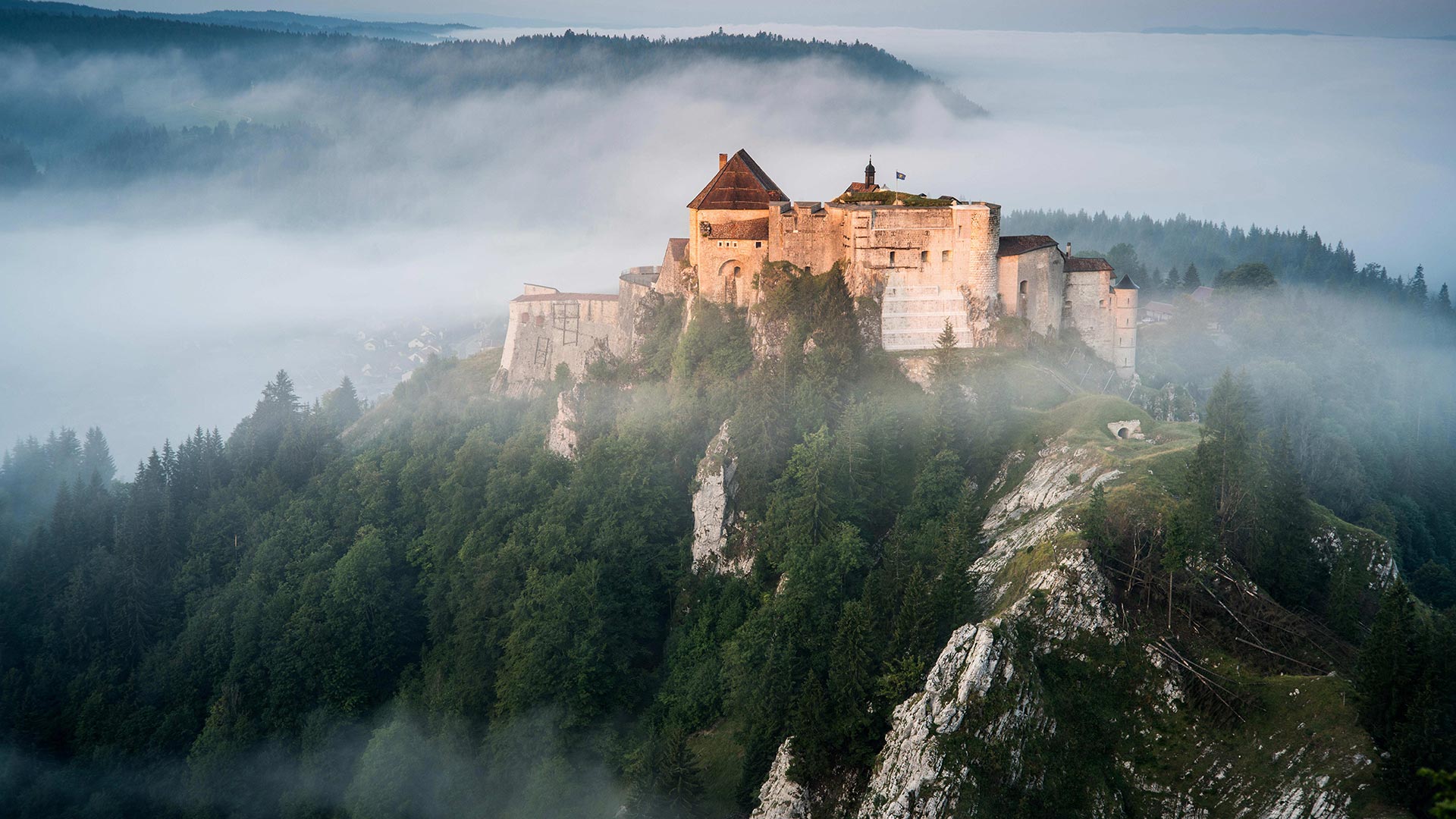
汝拉山中的Chateau de Joux堡,法国 Château de Joux in the Jura mountains of France (© Ivoha/Alamy)
Military art
Overlooking the valley linking France to Switzerland (the Cluse de Pontarlier), Joux castle – with its keep, towers, drawbridges, surrounding walls and fort – offers fantastic evidence of the way fortifications have developed over the years. Built in the 11th century, then modified by Vauban in the 17th century, people will discover 10 centuries of history there.
军事艺术
俯瞰连接法国和瑞士的山谷(Cluse de Pontarlier),Joux castle及其要塞、塔楼、吊桥、围墙和堡垒为多年来防御工事的发展提供了极好的证据。建于11世纪,17世纪被沃邦修缮,人们将在那里发现10个世纪的历史。
霍恩施万高城堡, 巴伐利亚, 德国 Hohenschwangau Castle, Bavaria, Germany (© Mespilia/Shutterstock)
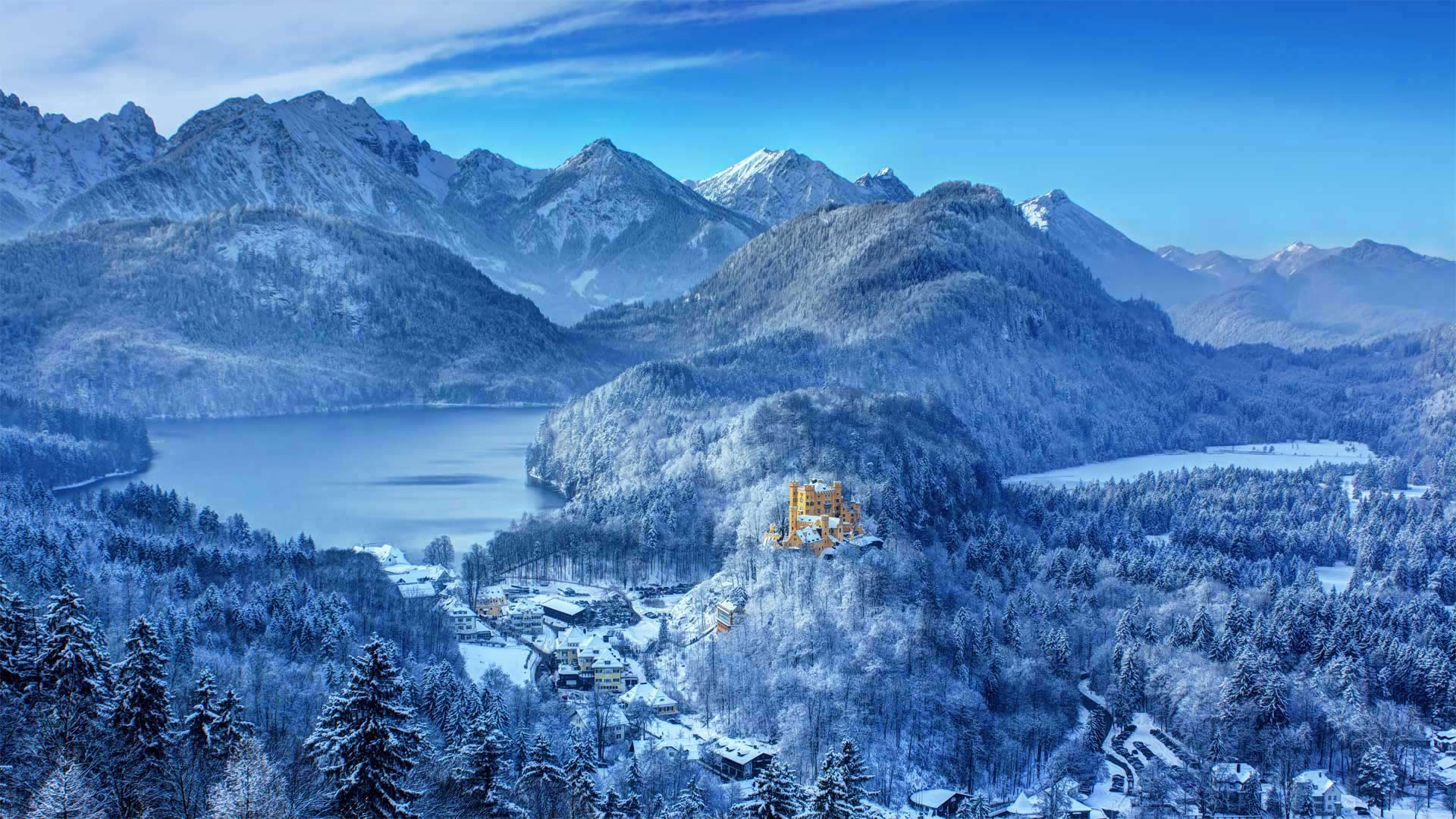
霍恩施万高城堡, 巴伐利亚, 德国 Hohenschwangau Castle, Bavaria, Germany (© Mespilia/Shutterstock)
An Alpine fairytale castle
During a walking tour in the spring of 1829, Crown Prince (and future King) Maximilian II of Bavaria fell in love with these forested mountains and Alpine lakes, so three years later he bought the dilapidated remains of a 12th-century castle overlooking the village of Hohenschwangau. The yellow neo-Gothic castle that Maximilian built to replace the earlier ruins became the summer home and hunting retreat for the king, his wife Marie of Prussia, and their two sons, Ludwig and Otto. Hohenschwangau Castle became a kind of fantasy palace, particularly for the two young princes, who spent their time traipsing through the forest, reciting poetry, and staging scenes from the Romantic operas of Richard Wagner.
After the death of King Maximilian in 1864, Ludwig ascended to the throne and moved into his father's rooms in Hohenschwangau castle. He ordered that stars be painted onto the bedroom's ceiling and had them illuminated by hidden oil lamps. Ludwig and his successors made few other modifications, so most of the rest of the castle remains unchanged even today—the 19th-century interiors contain period furniture, and preserved on the walls are more than 90 frescoes depicting heroic German folklore and the medieval legends of Wagner's operas.
阿尔卑斯山童话城堡
在1829年春天的一次徒步旅行中,巴伐利亚的王储(和未来国王)马克西米利安二世爱上了这些森林覆盖的山脉和阿尔卑斯山湖泊,因此三年后,他买下了一座12世纪的城堡的破旧遗骸,俯瞰着霍恩施旺高村。马克西米利安为取代早期遗址而建造的黄色新哥特式城堡成为国王、普鲁士的妻子玛丽和他们的两个儿子路德维希和奥托的夏季家园和狩猎撤退地。霍恩施万高城堡成了一座梦幻宫殿,尤其是对两位年轻的王子来说,他们花时间在森林中穿山,背诵诗歌,并上演理查德·瓦格纳的浪漫歌剧场景。
1864年马克西米利安国王去世后,路德维希登上王位,搬进了他父亲在霍恩施旺高城堡的房间。他命令把星星涂在卧室的天花板上,用隐藏的油灯照亮它们。路德维希和他的继任者几乎没有进行其他修改,因此城堡的其他大部分仍然保持不变——19世纪的室内装着时期的家具,墙壁上保存着90多幅壁画,描绘了德国英雄的民间传说和瓦格纳歌剧的中世纪传说。
远眺格斯韦因斯泰因村和格斯韦因斯泰因城堡 (© Juergen Sack/Getty Images)
艾琳多南堡,苏格兰 Eilean Donan Castle in Scotland (© CBW/Alamy)
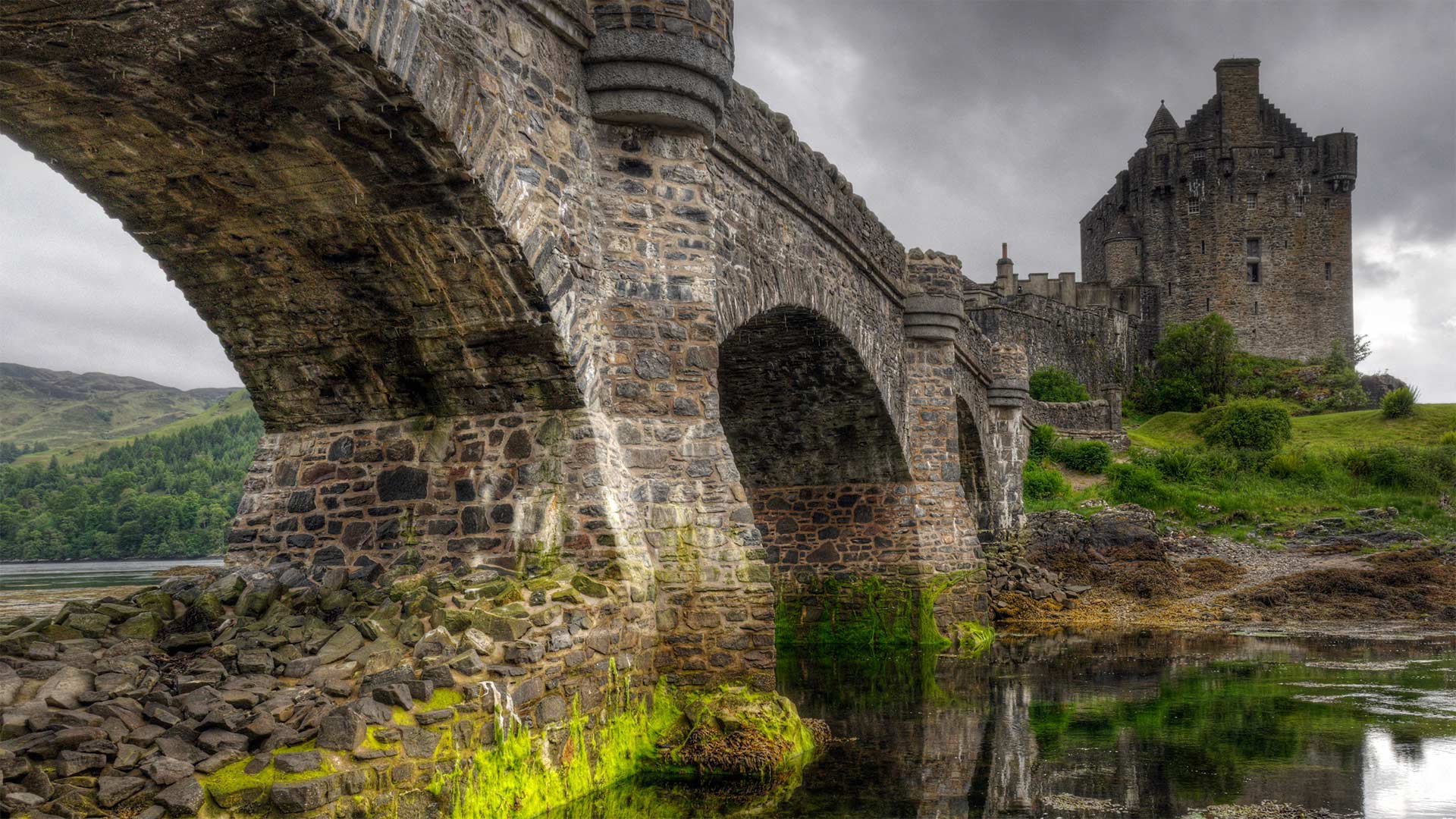
艾琳多南堡,苏格兰 Eilean Donan Castle in Scotland (© CBW/Alamy)
A water loch-ed castle
Located on a small island where three sea lochs meet in northwestern Scotland, the current Eilean Donan Castle is just the latest incarnation of several monastic cells and Scottish clan strongholds that have occupied the small island since the 7th century. The first fortified castle was built in the 13th century to defend against invading Vikings who occupied much of Scotland at the time. An iconic symbol of Scotland, from the 14th-18th centuries, the castle was mostly held by the Mackenzies and defended by the Macraes, both storied clans of the Scottish Highlands. The castle was destroyed in 1719 by the invading British Royal Navy during the Jacobite Uprising, but was rebuilt along its earlier design in the early 20th century by Lt. Colonel John Macrae-Gilstrap.
